Macromolecules In My Food Worksheet Answers 1 Based on your results which type of macromolecule stores the greatest amount of energy Use your data to support your answer 2 Did your results match your prediction Specifically how were they the same or different 3 According to nutritional studies carbohydrates contain 4 Calories per gram and fats contain 9 Calories per gram
Study with Quizlet and memorize flashcards containing terms like What is a macromolecule List the 4 types of biological macromolecules List 3 foods with simple sugars and three foods with complex sugars and more Today you will examine the nutritional content of your food and determine if you are getting the energy and nutrients you need Directions Find the food label of three things that you have eaten or would consider eating and complete the following information Background Questions 1 What is a macromolecule Identify the four types of
Macromolecules In My Food Worksheet Answers
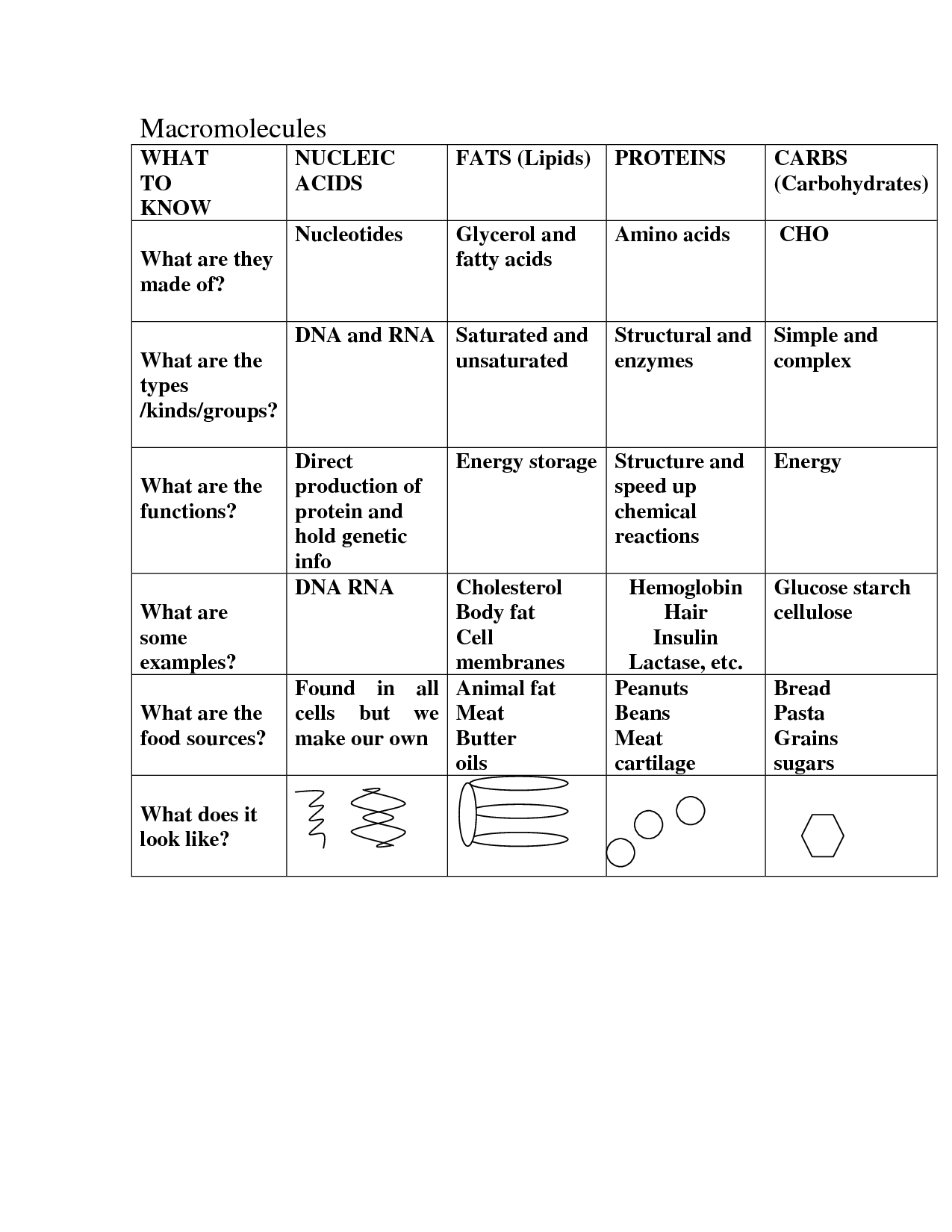 Macromolecules In My Food Worksheet Answers
Macromolecules In My Food Worksheet Answers
https://www.worksheeto.com/postpic/2013/10/macromolecules-chart-worksheet_209266.png
of 10 Macromolecules Worksheet Explain the versatility of carbon in molecule formation by its electron configuration and the kinds and numbers of bonds carbon will form Carbon can form four covalent bonds single triple double because it has 4 valence electrons covalent compatibility with many elements
Templates are pre-designed documents or files that can be utilized for various purposes. They can conserve time and effort by offering a ready-made format and design for producing various type of content. Templates can be utilized for personal or professional jobs, such as resumes, invitations, flyers, newsletters, reports, discussions, and more.
Macromolecules In My Food Worksheet Answers
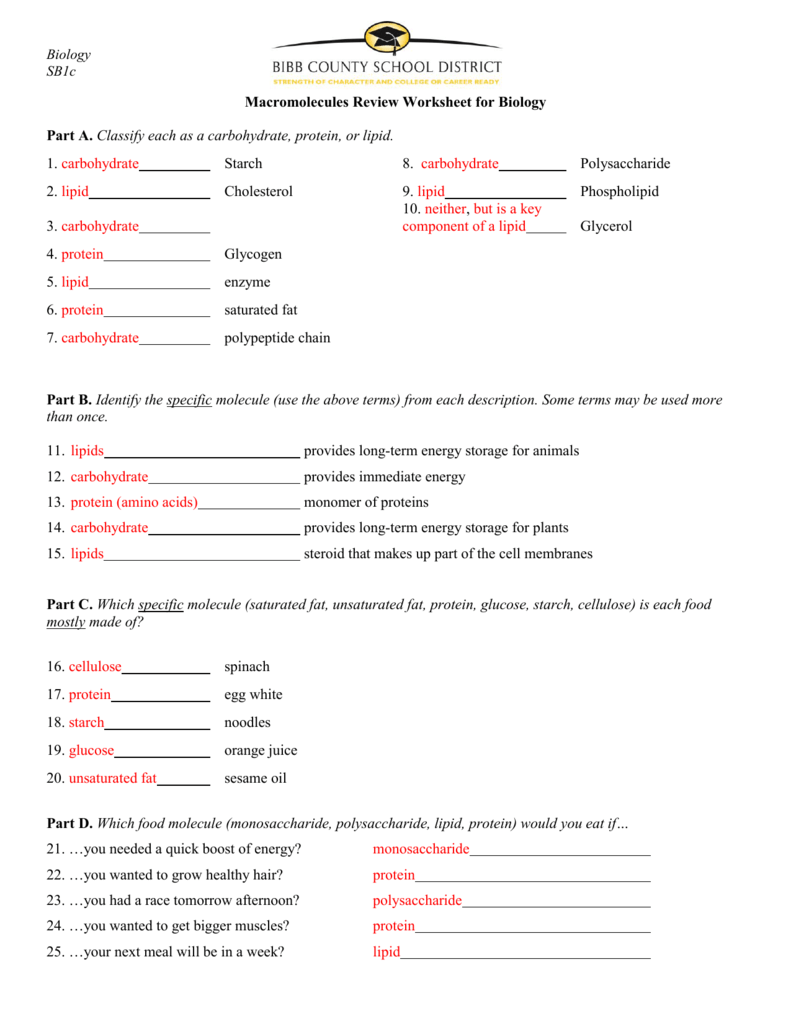
Macromolecules Worksheet 2
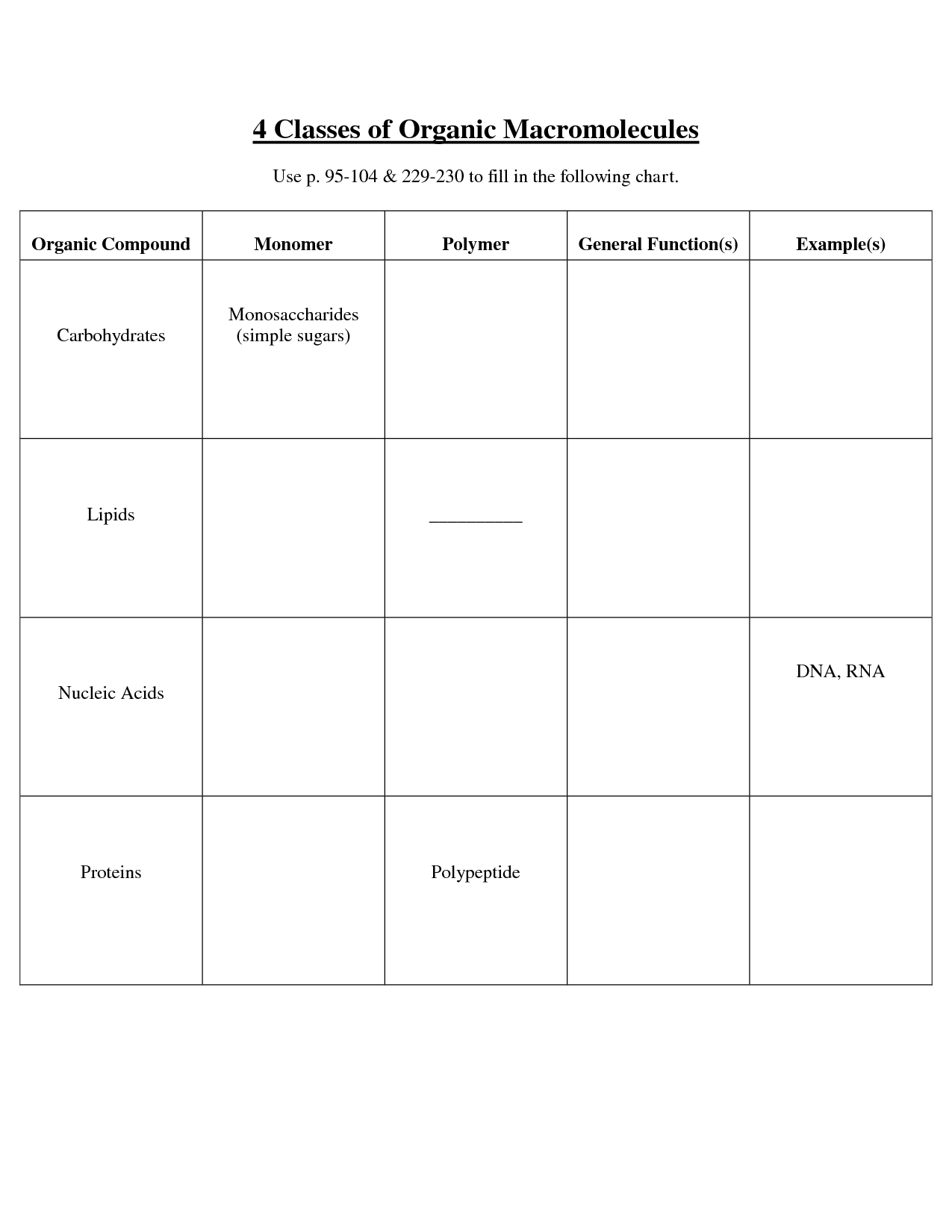
12 Biology Macromolecules Worksheets Worksheeto

Macromolecules Of Life Worksheet DocsLib
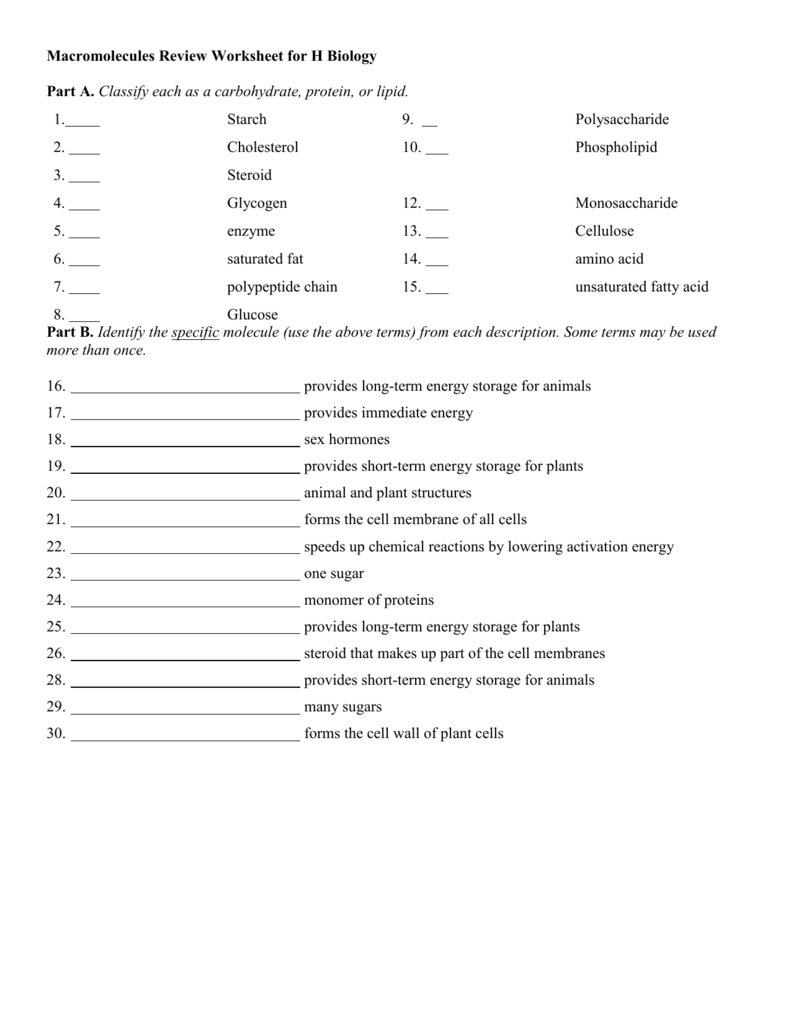
Macromolecules Worksheet 25 Answers
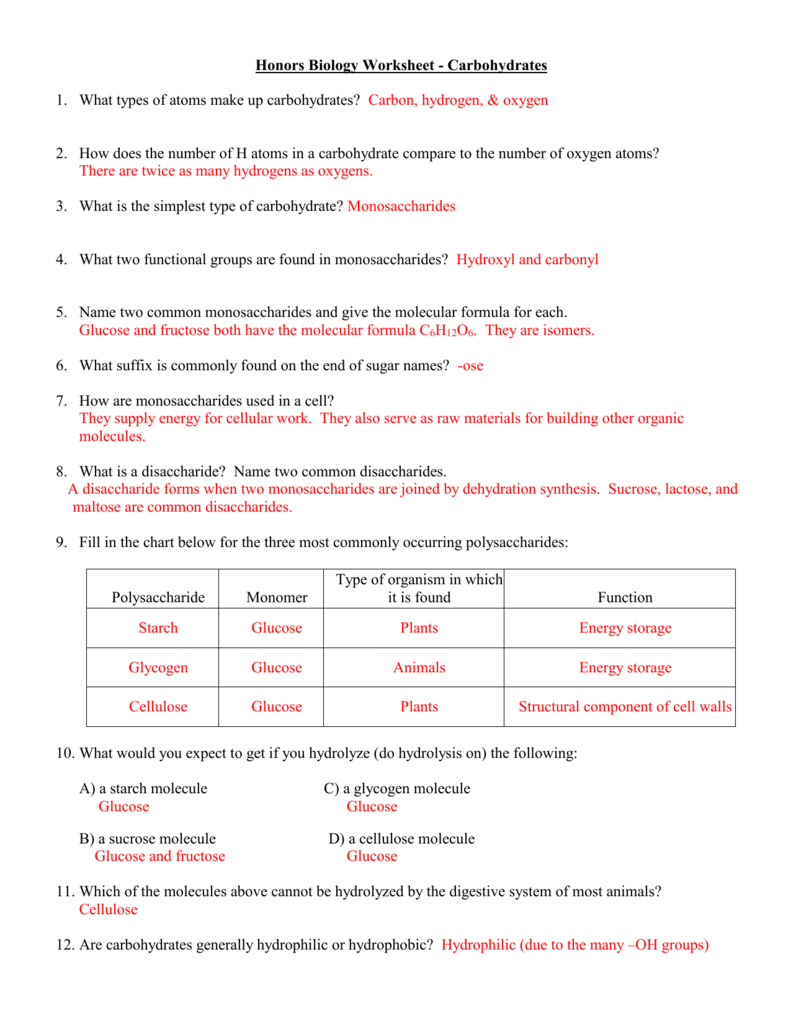
Building Macromolecules Worksheet Answers Educational Worksheet
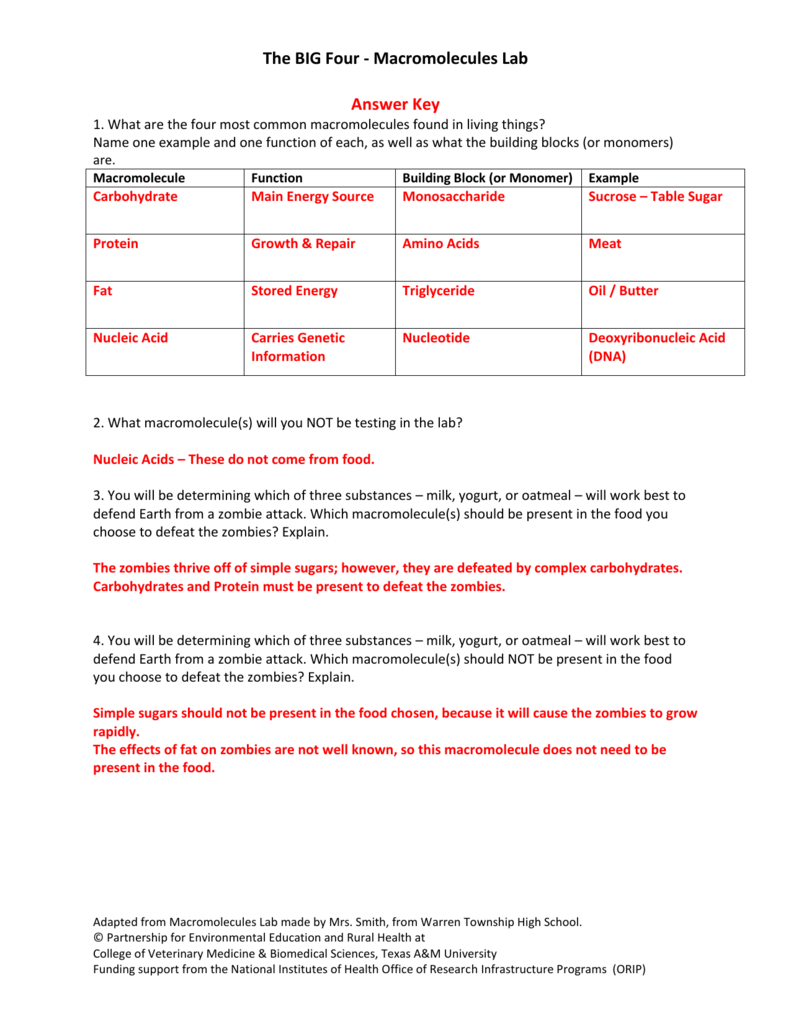
Building Macromolecules Worksheet Answers

https://www.studocu.com/en-us/document/east
Macromolecules Review Worksheet for H Biology Part A Classify each as a carbohydrate protein or lipid carbohydrate Starch 9 carbohydrate Polysaccharide lipid Cholesterol 10 lipid Phospholipid lipid Steroid neither but is a key component of a lipid Glycerol carbohydrate Glycogen 12 carbohydrate Monosaccharide

https://louis.pressbooks.pub/generalbiology1lab/
What types of macromolecules can be detected using this solution Discuss the answers to questions 1 and 2 with the class Detecting Reducing Sugars Starch Proteins and Lipids The three major macromolecules that make up the bulk of our foods are carbohydrates lipids and proteins

https://quizlet.com/583361006/lab-assignment-6
Study with Quizlet and memorize flashcards containing terms like Which of the following molecules is NOT a macromolecule Look at all this food Are we allowed to eat it after the experiment Click on the food that contains a high amount of carbohydrates and more
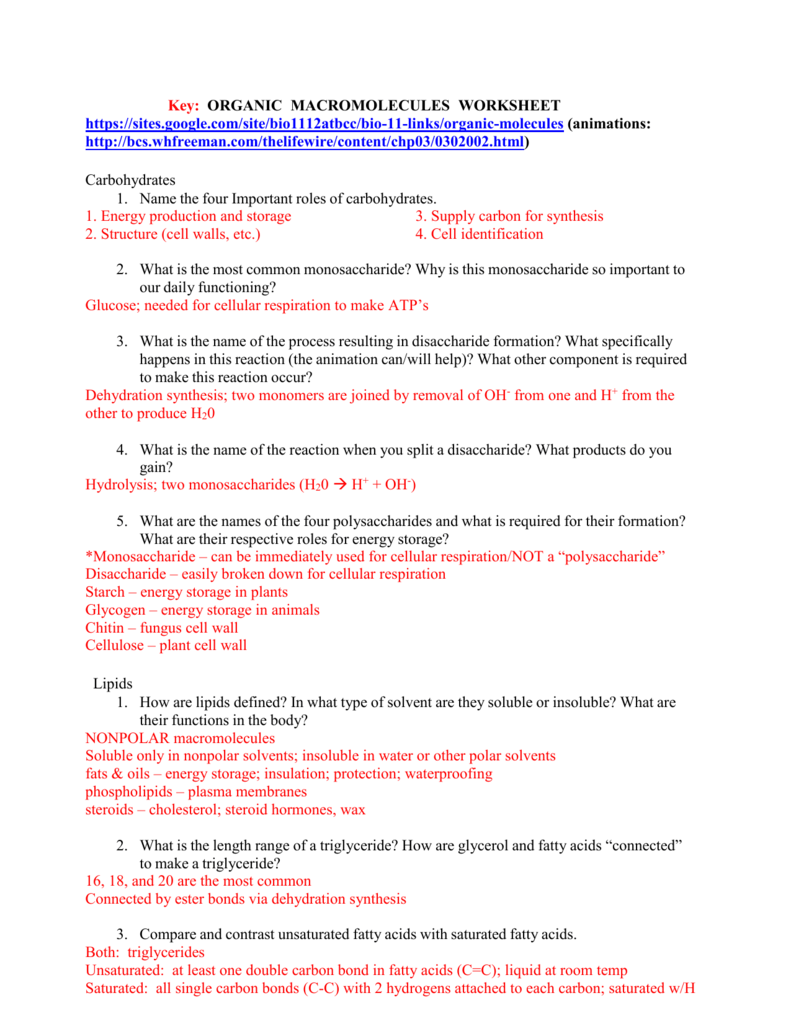
https://www.studocu.com/en-us/document/northern
A Based on your knowledge about the available food items make predictions about the which macromolecules will be present in each food sample and record your predictions in Table 2 of the Lab Worksheet For example if you think the food sample contains simple sugars place a in the Simple Sugars column in the row corresponding to

https://www.khanacademy.org//a/introduction-to-macromolecules
If you re wondering what something as weird sounding as a large biological molecule is doing in your food the answer is that it s providing you with the building blocks you need to maintain your body because your body is also made of large biological molecules
Macromolecules Review Worksheet Part A Classify each as a carbohydrate protein or lipid Starch 9 carbohydrate Polysaccharide Cholesterol 10 lipid Phospholipid Steroid neither but is a key component of a lipid Glycerol Glycogen 12 carbohydrate Monosaccharide enzyme 13 carbohydrate Cellulose Biological Macromolecules Fill in the blank Carbohydrates are classified by The most common simple sugars are glucose galactose and fructose that are made of a
All organic naturally occurring carbon containing molecules are classified into 4 general categories Carbohydrate Lipid Protein Nucleic Acid Foods you consume consist of these 4 molecules because the foods you eat come from living organisms